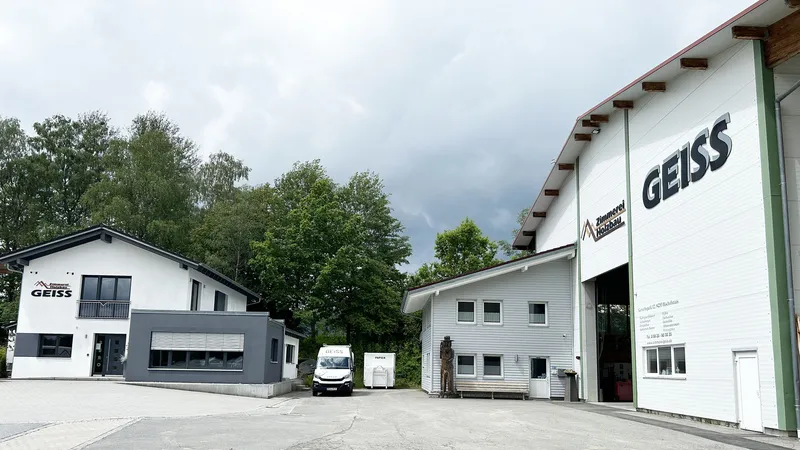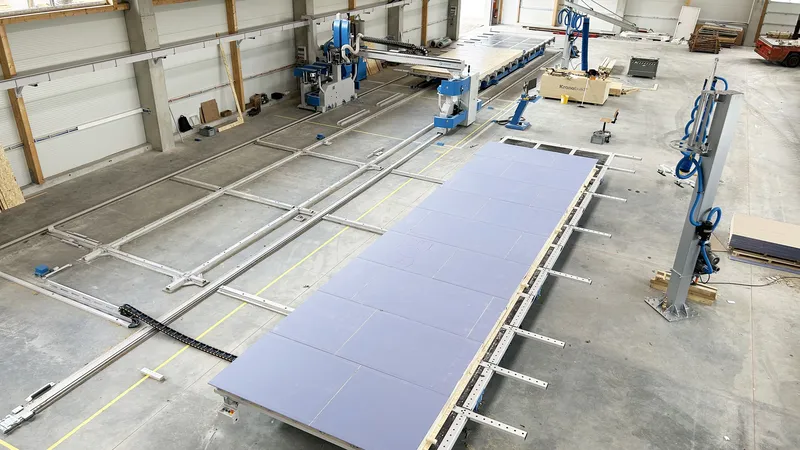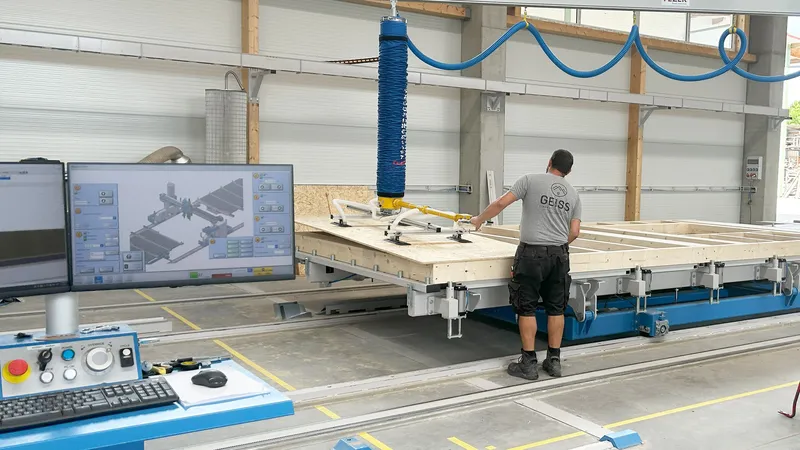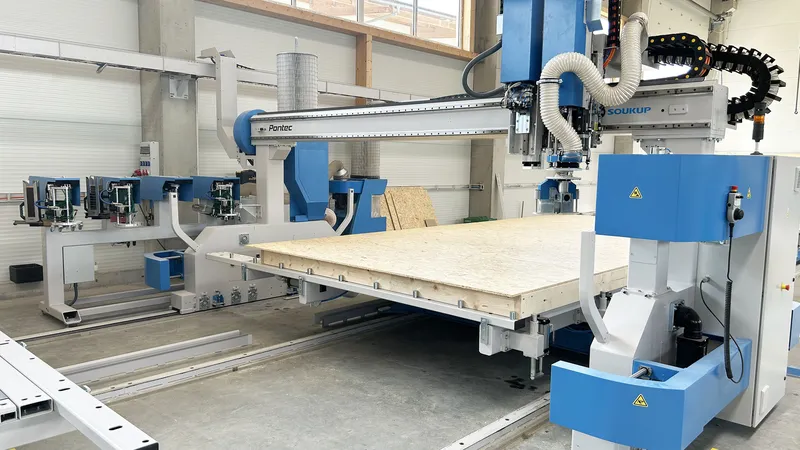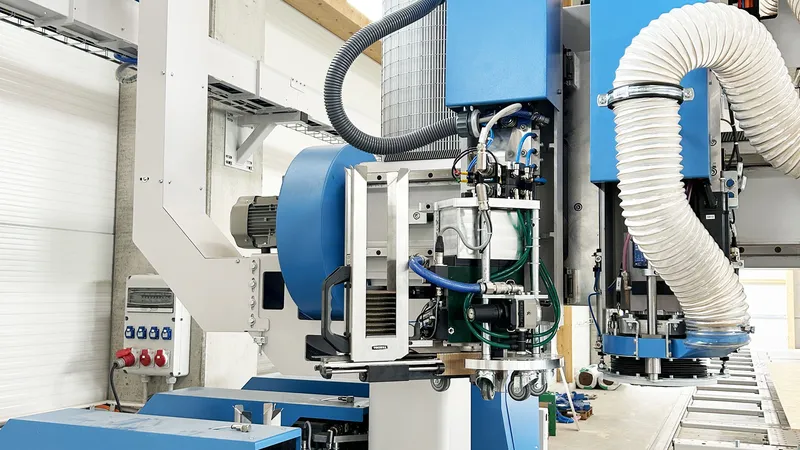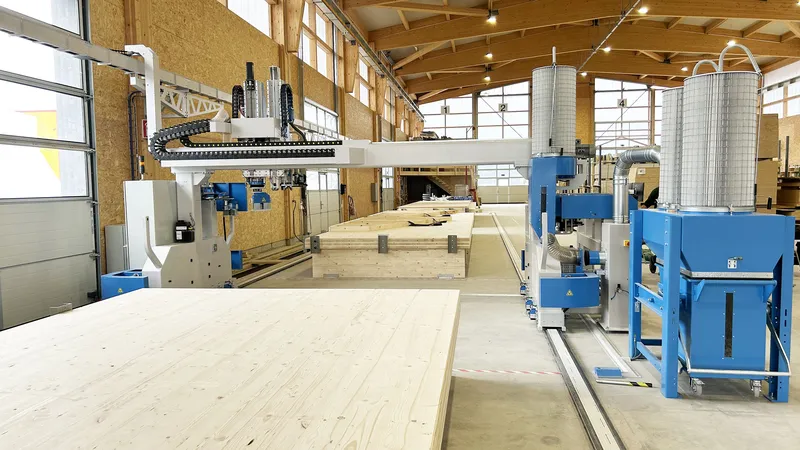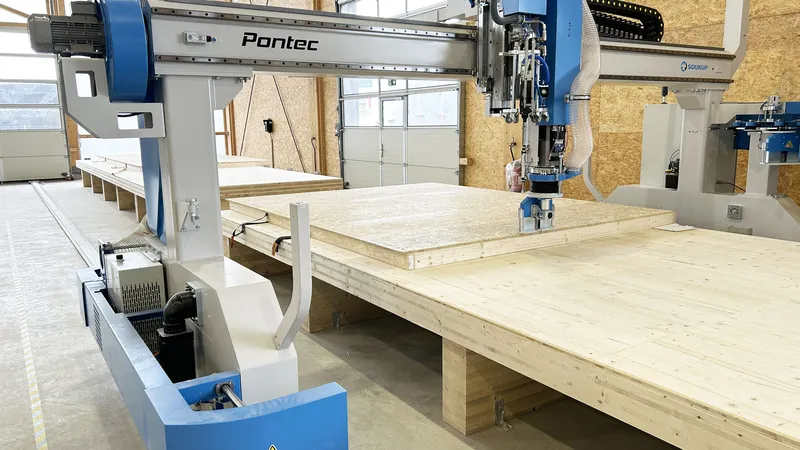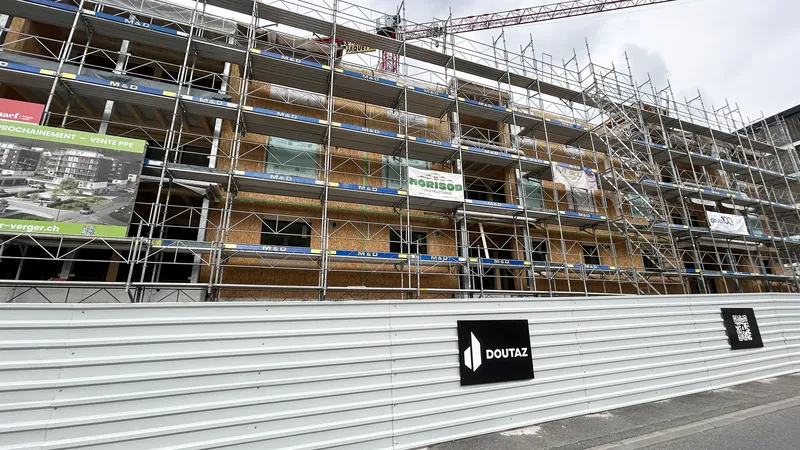Feb. 6, 2025
Pontec CNC portal installation in Germany and Switzerland
In the past, our project designs have been driven by panel size, number of houses produced per year, i.e. site throughput, finishing and storage capacity. But the last two projects are very different.
The first project is from Bischofsmais in Bavaria, where Geiss produces wooden buildings, mostly of a residential nature. The initiator of the investment in the CNC line was a school project, which would be difficult to produce under current conditions. The basis of the existing production is the Hundegger K2i milling centre, which prepares elements for roof and ceiling structures as well as for wall panels. The equipment allows the use of interesting construction details such as angled recessed reinforcing bars, interlocking pins for settling walls and so on.
The new panel line consists of two 12-metre-long tables with a working width of 3.8 metres. The first framing table is fully equipped for rectangular and angled walls, as well as pneumatic clamps for floor and ceiling panels. The second table is a simple workstation where the insulation is inserted after the panels are turned, the other side is sheathed, the fibre board insulation is stapled and the partition is produced. Movements set the tables for the work positions, panel flipping and machining under the PONTEC portal.
I don't know if we can say that this is a trend, but this line is not oriented towards serial prefabrication of standard panels, but towards individual production of very complicated sandwiches. The German experience also shows that current production is more oriented towards the production of more expensive buildings with a variety of wall compositions.
The second experience is the installation of a CNC portal PONTEC in the Swiss town of Bex by Morisod SA. The company with a long tradition focuses on residential construction. Here, wooden buildings have clearly got the green light and are increasing their share. On a housing estate built in phases, this is noticeable. The first house was a combination of concrete frame and timber infill, the next was a timber house with a concrete module for the staircase and lift, and the last house is already a full timber house. There are no height limits, just all regulations and fire precautions need to be followed.
The PONTEC CNC multi-function bridge moves on a 55 m track and operates four wooden tables of its own manufacture made of CLT plates. At each 10-meter long workstation, the panel is framed and all operations are performed. After one side is completed, the panel is turned by an overhead crane. Then the other side is folded and machined. In this case, we have two guns in the Pontec stack - one for sheet materials and one for insulation. The other two positions remain free.
The use of a bridge crane seems to be very useful. The crane not only turns the panels, but also places them in racks or can directly stack them on the plate of the future module. We have to say that these two installations of our equipment show us the possible direction of the production of wooden buildings in our country. On the one hand, there will be large capacity lines, and on the other hand, there is room for smaller companies where, with minimal handling requirements, the elements will be finished to the required quality using a machining gantry. For smaller companies, we are often still in the pioneering days when all operations are carried out on simple tables by hand, but by highly skilled personnel. The performance and quality depends solely on them.
Today, CNC technology is replacing these skilled workers. We can compare it with a classic joinery workshop, once equipped only with traditional machines. And today? No workshop can practically do without a CNC machining centre.





